Recently I spoke with the key figures of The Irishman’s Art Department to wrap my mind around the film’s production design. I had the unique opportunity to interview The Irishman Supervising Art Director Laura Ballinger Gardner, as well as Set Decorator Regina Graves, and Production Designer Bob Shaw. This is the first part of our series on The Irishman‘s production design. The Irishman is nominated for Best Production Design at the 2020 Academy Awards, BAFTA Awards, and the ADG Awards.
“Some day I’ll have to get those little air traffic control light signals and I’m just going to have to walk around the art department with them.“
If you’ve known me very long, or have been reading this site for a while you may already know how obsessed I am with the work of Martin Scorsese. Needless to say, The Irishman surpassed all of my expectations and closed what I and many others see as an epic mob trilogy by one of the grand masters of cinema.
I felt it was important to interview Laura, as the Supervising Art Director of the film, not only because we have never interviewed an Art Director here before, but also because she had the extraordinary experience of art directing another production design giant this year with Joker which I was able to view earlier this year at the Toronto International Film Festival. Joker is now nominated at the 2020 ADG Awards and BAFTA Awards for Best Production Design.
I should also note that I’ve been following Laura’s career since I saw her production design work on the first season of Girls. She designed Charlie’s apartment and Shoshanna’s first apartment which left a lasting impression on me as a big fan of the show. Since then I always smiled when I saw her name on a new project so it was really lovely to pick her brain about her work which you can read below.
Joker and The Irishman Supervising Art Director Laura Ballinger Gardner On Backdrops, Vectorworks, and Flowcharts Share on XL: The Irishman (2019), Production Designer: Bob Shaw | R: Joker (2019), Production Designer: Mark Friedberg
Interview with Joker and The Irishman Supervising Art Director Laura Ballinger Gardner
How did you get into production design and the art department and what made you interested in it?
I went to school for theatre, but it was a film school. I went to Emerson College and I always wanted to be in the film department. Instead I was working in theatre design and working in the shops building and painting scenery.
I kept going to the film department and asking if I could work on student films because I knew that’s what I wanted to do. I didn’t know exactly the capacity, but I knew I wanted to work on films.
When I moved to New York I worked as a Stagehand and an Electrician, as a Prop Master and a Scenic Painter for theatre, but I also kept doing films for free– good ones until I could fill up a portfolio. I kept going until I could leave theatre and go into film.
I did all of the jobs. I was a Prop Master, I was a Set Decorator for one job, I was an Art Director and then a Production Designer, but I think I’ve settled into art direction now. I’m pretty happy here.
What was it that made you feel like film was a better fit than theatre?
I think I liked the realism. Using real materials, working with real outside vendors, sign makers, stained glass makers– just being able to work with real materials instead of faking it.
I’m glad I worked in theatre. I have a lot of knowledge about rigging and painting and fabrication, but for me, I like the realism aspect of it as well as the research.

Girls (2012), Episodes 102-110 | Production Designer: Laura Ballinger Gardner
What was your decision process like as you transitioned from art direction to production design, and back to art direction? Why have you chosen to be an Art Director over being a Production Designer?
It was an organic process. I was art directing smaller budget films. I had done The Fighter, and other films in the 18-20 million dollar range, but I always thought that you were supposed to want to be a Production Designer. That’s what they tell you in college. That, that’s the goal: you work your way up, and you become a Production Designer. So I just kept working my way up.
Then Girls presented itself to me and then I got an agent. Things presented themselves to me but I was never quite comfortable in that position. I missed the interaction with the shops and the draughtsman. It’s a different interaction when you’re designing and I missed that.
At some point after I had designed a few things, I started getting some art direction offers that were bigger, and they just kept getting bigger, and bigger, and more interesting. I ended up art directing for Production Designer Doug Kraner on the Gotham pilot and he was a big influence on my decision to move more permanently into art directing. I just decided to stay in that world. I also have kids and I don’t want to travel so it was a better fit family-wise too.
Now, you’re at the point where you get to do the biggest shows available. You were the Supervising Art Director not only on The Irishman but on Joker, right?
Yes, I also did The Greatest Showman. I kept doing these great movies that I really enjoyed, but, yeah, this year is a great year because they just happen to coincide. I did The Irishman and then went straight onto Joker, but they were both released at the same time.

The Greatest Showman (2017) | Production Designer: Nathan Crowley
So you did Joker after The Irishman?
Yes, because The Irishman had such a long post-period, that’s how it worked out.
How did you get involved on The Irishman?
Well, I had been working with Bob Shaw for a couple of years prior to that. We did Deliver Us From Evil and then we did the Vinyl pilot. We’ve done quite a few jobs after that together. We’re a good fit and I enjoy working with him. We laugh a lot and we like the same people– the same Set Designers.
Do you usually bring on the same Art crew? How do you go about crewing, and is Bob really involved in that process?
He is. I will always ask him first and usually, there are only one or two people, and they’re people that I’ve brought on prior jobs. I try to bring a core group of people but I always like to get at least one or two people that I haven’t worked with before.
I’m always bringing in somebody new to join us because I don’t want things to get stale. I want to bring people in with new ideas, but there’s a core group of Set Designers I like to work with but I’m always looking for somebody else to bring in that’s new.
Vinyl (2016) | Director: Martin Scorsese, Production Designer: Bob Shaw, Art Director: Laura Ballinger Gardner, Set Decorator: Regina Graves
Does the same thing go with the Graphic Designer/s, Art Department Coordinator, and Art PAs?
Well, my Coordinator… I have always tried to use the same Art Department Coordinator, Stephanie Abbaspour and that is something I don’t want to experiment with. There’s a shorthand I have with my Coordinator.
We also have a great Art PA– at least she was an Art PA. Her name is Nara DeMuro. She is now an Art Department Research Coordinator which has now become a category here in New York– it’s an IATSE 829 category. So now she’s doing research.
It’s amazing having her and Stephanie. They know how I like to run the Art Department, how I like to distribute drawings and everything. We have a really good shorthand so I would never want to mix that up, except for the Art PAs. I always want a new Art PA.
With graphics, I always let Bob choose. Mostly the Production Designer will always pick who they prefer for graphics. It’s almost always whoever the Production Designer is comfortable with, and then we bring on 2nds and 3rds.
Sometimes we’ll bring on new people but I kind of leave that to Holly. Holly Watson is the Graphic Designer 1st who works with Bob a lot so I always let her say who she wants to work with.
Ext. Food Fair
How early were you involved on The Irishman? I read that Bob was scouting up to 5 months before the rest of the Art Department was brought in?
Yes, he was.
Were you on board at that time? Were you already working with him on The Irishman that early into pre-prep?
I don’t entirely remember. I was definitely in early, but not as early as Bob was. He was sending me links and we were talking about who we were going to hire.
He was definitely putting out feelers to get Set Designers even before I started because it’s so busy in New York and you really have to plan ahead if you want the A-team. As soon as you know, you have to start putting feelers out there so I was doing that.
I honestly can’t remember how many weeks of prep I had. It must have been in the 22-25 week range because we had a lot of stuff to build, to just get that stuff out of the way before we could even start on the locations.
I read that you guys had 295 locations including 28 set builds?!
That sounds about right. We had 20 backdrops! [laughs]
I can’t even imagine looking at that set list every day.
It was very, very long. We had to print it on the plotter and put it on the wall because we couldn’t read it any other way. It was 8 feet tall.
You guys shot for 106 days, I read?
Yes, we did. It was a long one, but it never felt overwhelming. We had enough time to plan so it really felt like we could just keep going. We were able to react to changes because we knew there would inevitably be changes but it just seemed to flow. Maybe because it was 2 years ago, I don’t remember the pains of it but it seemed to flow. I loved that job.

On the soundstage at Marcy Armory in Brooklyn
With all of these locations, in order to make your days worth it, how many unit moves were you guys looking at per day?
We were doing 3 unit moves per day max. I don’t think we moved more than that. On the stage, we were in the Armory in Brooklyn, we could move more freely. At any one time, we had at least 5 or 6 sets standing. When one would come down, we’d put a new one in.
They could move faster in there but on location, it was about 3 moves. We jumped around a lot. I would start in the morning at one and then leapfrog onto the next and then the next. I always want to open the sets with Bob even if I’m only there for half an hour with him and then take off.
You guys were recreating a wide span of areas, like New York, Pennsylvania, Miami, Michigan, Ohio, and New Jersey. So was most of it still shot in New York? Did you guys shoot in Pennsylvania at all?
There were some other Units that did exteriors all over, but everything else was in New York. Sometimes we would go out of our zone. We have a shooting zone here but we went to Rockland County and Long Island. We basically went wherever we could find something that looked outside of New York. It’s out there, it’s definitely out there.
I know that Bob would try to key in on whatever the regional gas station was because we had 3 or 4 gas stations. We would key in on whatever that regional gas station would have been and that’s what we would turn the set into. So those gas stations are all regional right where they were but they were all created and shot in New York.
Ext. Gas Station- Hwy 476- Philly 1950s
Other than that, I did read that you guys shot a little bit in Florida, yes? Was that just 2nd Unit or was that a separate Unit?
Yes, there was a Miami Unit. They shot outside the Deauville Resort there because it still exists. I didn’t go. We had an Art Director down there and they had their own crew.
We had the Miami Unit and two 2nd Units, one in the middle of the shoot and one at the end of the shoot that also had their own Art Directors so we crammed a lot in there.
Did you have a lot of discussions with them? What was the flow like between you guys in New York to the other Units?
The Miami Unit would send me the budgets and photographs and the work lists. I would look at them all because they tied in with things we were building here. I wanted to make sure that it was seamless so I would review that stuff.
Bob went down twice, I think. Once when they were shooting and once for the tech scout. He saw everything and I would make sure it was flowing with everything we were drawing up here.
The 2nd Units were out of New York so with that Art Director, we would give them one of our Set Designers to work with them in the office together. We looked at everything together, we looked at pictures and work lists, but they did their own budget and I didn’t tech scout with them on the 2nd Unit. They were independent but we were always checking to make sure everything was always seamless on camera.

Ext. Deauville Resort
How did you work with the AD department to schedule the studio sets build and strike flow on The Irishman?
I’ve worked with them before. David Webb is the 1st AD and I’ve worked with them a few times now. We did the Vinyl pilot and then we did The Irishman and then we did Joker so I have a really good working relationship with them.
They were comfortable coming to me and I would text with them and I helped them make their calendars downstairs then we’d come stand in front of it and figure out how to move the post-its around. I like being involved to that extent. I think it’s helpful.
I had to move those sets around and know when they could move so we had to constantly be talking. I have a pretty large flow calendar of my own that also prints on the plotter and we run it across the wall and try to track it that way.
Bob Shaw refers to you as an air traffic controller. How do you feel about that?
I love that. Some day I’ll have to get those little air traffic control light signals and I’m just going to have to walk around the art department with them.
So how big was your art department on this? How many Set Designers were you running with on this given how many sets there were to accomplish?
We maxed out at 6 Set Designers, 1 Illustrator, and 4 Graphic Designers. So that’s on par with The Greatest Showman which was about that much. Joker was a little less, but anything more than that is too much. It’s a lot, but they’re all great.
That was another flowchart, right: the Set Designer finishes now, they are moving onto the next thing and what are they moving onto, that sort of thing. You have to keep it open to give to whoever can take on the next set, whoever is going to finish first. It’s a bit of traffic control as well.


Int. Villa di Roma Concept Art by Eric Fehlberg
I saw some of the pre-vis on The Irishman. Were the Set Designers doing the 3D renderings from the beginning or did you have a separate Concept Artist on board from the start?
We had both. We had a Concept Artist, Eric Fehlberg, but I also have… two of my Set Designers are very good at SketchUp and that’s how they start their set designs. Ryan Heck and Ann Bartek both start in SketchUp and then they move onto the draughting.
They did a lot of the concept views for us that way. Eric would do a lot of the Photoshop concepts for exteriors because those aren’t models that we have built. So he did mostly the exteriors with a couple of the interiors as well.
Some of my Set Designers don’t do 3D. They have a different way of working. They have a different process, so they would just draught in 2D and then Eric would take over and do concept art for that.
For example, that’s how Villa di Roma was done. It was draughted in 2D in Vectorworks and then Eric built himself a little 3D model and took his views from there. It just depends on what the best way to handle it is based on who the Set Designer is.


Int. Villa di Roma
Are all of your Set Designers using Vectorworks? Is that the standard program in New York or do some people use AutoCAD?
It’s 90% Vectorworks. Ann Bartek can use AutoCAD and Vectorworks which can be really helpful, but almost everyone uses Vectorworks. There are a few AutoCAD users.
Is Rhino commonly used in New York?
There are some people who use Rhino. For whatever reason, I haven’t run into it that much, but yes, I know there are people who use Rhino.
I don’t, so maybe I gravitate towards the Vectorworks people because I usually do the stage plans. When it’s Vectorworks I can usually just take their set and put it on the stage plan.
It makes sense that everyone, for the most part, would be using one program like Vectorworks. It gets a little difficult when everyone is using something different.
It does. It can be really challenging. Even with Vectorworks though, they’ll give me a stage set to put in a stage plan and it’s got 30 classes in it so I end up with a stage plan that I can’t… it’s a challenge.
Int. Latin Casino
For you, what was the biggest challenge in art directing The Irishman, other than the sheer amount of sets? What were your big challenges on this?
For me, it was the backdrops. I found the backdrops really challenging. Trying to make sure that there was enough room on the stage to light them how Rodrigo wanted to light them, but still have the ability to move them around. The backdrops were sharing lighting space on the stage so you’d have to move one out of the way to backlight the other and I found that was a tricky one to figure out.
Some of the backdrops were rented and some were printed. We had such a mishmash of backdrops. Some of them were exterior locations that we were building the interiors of. They wanted to be able to look directly out the front door and just shoot it while still on the stage so that backdrop couldn’t just be okay or passable– it had to be really good.
We had to really know our heights and how far away it was and get our horizon line perfect. We had greens out there on the stage so they could shoot out the front door. Usually, we don’t do that, you do that part on location, but they wanted to do it on the stage.
I also found it challenging to get the sets all done on time on this one. Location-wise, it was really the weather, the winter weather, and getting the Scenic Artists to be able to work outside in the cold. Which was more about scheduling too.
Ext. Friendly Lounge
When were you guys shooting roughly?
I can’t remember. I just remember we had a lot of challenges with snow and ice so we must have shot into January, February, and March. You can ask people to work outside in the cold and they will, but the paint and the graphics won’t stick.
We had advertisements printed on Rough-Tack, you know, that sticky vinyl that’s meant to adhere to brick but the wind and the cold would take that right off so there were some challenges with that. It wasn’t sticking.
One time we had arrived to set the next day and it had flown right off. Rough-Tack is meant to adhere to brick and be up outside for long periods of time, but something about that cold and that wind just ripped it right off. The outside work was tough.
I noticed there are loads of vintage signage in The Irishman which I imagine was all custom signage you guys had made. Can you tell me a little bit about that?
I love making signage. It’s one of my favourite things. I like to use as much real sign material as we can, so we did. We made a lot of signs. I tried to use different vendors. I don’t like to put all of my graphics into one vendor. I like to mix it up with which vendor does a better job with each material or type of signage.
The Howard Johnson sign that is seen at the front of the hotel was completely made by de Boer here in New York and I thought they did a really nice job. That one worked out really well. We integrated it with Construction building the base of it so there was that challenge of an outside vendor integrating with Construction, but it seemed to work out really well.


Ext. Howard Johnson’s- Front
The Latin Casino and the Clam House signs were really great too. I loved those details because I felt like they were really authentic.
The Latin Casino letters were real sign letters ordered from a sign company in the style of letters that would have been appropriate at the time.
The Copacabana awning— did you guys custom make that? I loved that it was nearly identical to the one in Goodfellas. Which as a huge fan of Goodfellas, was such a nice Easter egg.
Yes, it was done custom. It may have even been an amalgam of reference photos that included Goodfellas. You can find pictures of the original Copacabana, but I suspect we looked at the one in Goodfellas too.

Goodfellas (1990)

The Irishman (2019)
I appreciated the continuity between the films. This is more of a Bob question, but do you know if there was any conversation about keeping the continuity between films in this Scorsese mob trilogy?
Not for me. I’ve only seen this as I’ve been reading the reviews and seeing people referring to it that way. As I’m sure you know, Bob has a relationship with Marty. I think I’ve only met him once and this is my third time with Marty. I’m not sure he knows who I am. [laughs]
That’s different. He’s so huge a figure that I guess he’s not the type of director you’re able to have a personal relationship with when you’re working on the same project.
I speak with his producers and I really like all of his producers and the people that work with him. That’s who I end up talking to a lot.
Working with the Set Dec team– you were working with Regina Graves, and you’ve worked with Regina before, right?
I have. I first worked with Regina on The Knick and we got along really well. We hit it off at that time. Relationships with a Set Decorator can sometimes be difficult, not difficult exactly, but… everyone is just trying to get their stuff done so you have to remember that none of it gets done if we don’t work together.
The goal is to make sure that the Production Designer and the Set Decorator get time in the set alone, not to have Painters and Carpenters working around them. They need that time. So that’s always my scheduling goal is to back out of that and make sure that we’re done so they can get in there. The set won’t look good if they don’t get time in there.
So I try to keep that the focus with Construction and Scenic to make sure that they have enough time to do what they need to do. They have to get out in order to get Bob and Set Dec in there and I think Regina and I work really well in that capacity. I really like working with her.
After The Knick, we did the Gotham pilot together, we did the Vinyl pilot together, I don’t know what else, but we just keep going as well so I like working with her a lot. She brings a lot of interesting details to the set that I love finding in each set.
I like collaborating with her on the things that we have to get done ahead of time, like the tile and the linoleum, and figuring out how to build the windows so that she can have the window dressing that she wants in it, you know, there has to be a certain depth to the window for her to get what she wants in those windows. We have to talk about that ahead of time to make sure that’s addressed and little stuff like that.
Ext. Gotham Square on Joker
With Joker, was it a very different process from The Irishman? Fewer locations I’m sure. Can you talk about that a little bit?
I can. It was my first time working with Production Designer, Mark Friedberg, and the Set Decorator, Kris Moran so you don’t have that shorthand.
Mark does have specific people he likes to work with and I brought some people in too. It was actually a super mix. We had some old school hand draughtsman in there and some Vectorworks draughtsman and it was a really nice mix.
It was very different working with Mark. He has very strong ideas from the beginning of what everything should look like and his process starts with concept art and the Concept Artist starts before the Art Director. He’s doing concept art much earlier than anyone is on so when you walk in, there’s all this concept art up already.
It doesn’t always stick to that, but it’s just a different way of starting out. It was interesting. I really enjoyed it. I loved working on that show quite a bit as well.
Int. Arthur’s Apartment Building on Joker
How did you get involved on Joker?
I got involved because it was the same Line Producer/UPM from The Irishman, Carla Raij. I think Mark’s Art Director, Kim Jennings, has become a Production Designer now, so he was looking for someone new. Carla recommended me and I went for it. I just decided that that was going to be a good job for me, and it was. I was really glad to work with him.
It’s very different in scope and style. It’s a superhero movie, but also not a superhero movie. It’s very different from other superhero films.
Yeah, I never saw it as a superhero movie. It was always a character study in my mind, and Mark is very character-driven and he really wants to get into that character.
Int. Ha-Ha’s on Joker
Were there a lot of logistical issues on Joker? What were your biggest challenges on the film?
We had two stages, but only two sets on those stages. Both sets took up the entire stage. One was the apartment building where the Joker lives with his mother. It’s not a big apartment by any means, but it has an extremely long hallway of a Bronx apartment building. It was a very long hallway that must have been almost 150 feet long with another little apartment at the other end. The set was almost all hallway.
Then the other stage had the late-night talk show set. That was a real challenge because they wanted it to feel like The Tonight Show Starring Johnny Carson, but not quite Johnny Carson. We went over to the Jimmy Fallon show and did a tour there to see how those sorts of shows work, to see where the cameras are and how they light it.
Even though it’s the wrong period, that technology hasn’t changed that much— where they place the cameras, where people come in and stand on their mark, how the curtain lifts up, all those little details that I think we got right. I liked that talk show set a lot. I think that was a big challenge to design. We went through a lot of trial and error on the fabrics and colours.
The locations were great. They weren’t challenging. There were a lot of them and they all had to be aged. We had to do a lot of graffiti.
Int. Murray Franklin Talk Show on Joker
Did your Scenics do the graffiti or did you bring an independent artist to come in do it?
It was our Scenic Artist, Abe Costanza, who is a graffiti artist who has since joined our union and that’s mostly what he does. Although he’s a great Scenic in general too. When it’s graffiti time though, we have to figure out how to get him from set to set to do the graffiti. He’s a specialist for sure and then when he’s done with the graffiti, he’s just a great Scenic Artist on the crew.
Jumping back to The Irishman, I was just thinking, The Irishman explores 15 years of American history. Who was spearheading the research process given how early Bob started? How was the research achieved? It must have been an extensive process. How did you work with the research team?
Bob started his research process very early on. So when we walked in, there was already a library, but it wasn’t enough. It’s never enough. There’s never enough research. So then we brought on our Art PA, Nara, who is sort of a specialty PA since she is great at research.
She started doing research and also really cataloguing it. You can have all the research you want, but if you can’t find it, it’s not useful so you kind of need a librarian to do that.
Then Marty’s researcher, Marianne Bower, joined us— she’s an amazing resource. She really knows her way around video archives which is something we have a little bit of a harder time getting into. I think her ability to get into the video archives of a news organization is pretty amazing.
So they– Nara and Bob and Marianne, had a great relationship via email sharing information and so it was the three of them working on the research together. The Set Designers do their own research too so we would throw their stuff in there as well.
It became a mishmash, but as long as you have a point person who can organize that stuff then it’s easy to find. We always have Bob make sure he picks his heroes within each file and has a hero file in each folder so then we know what his favourites are in each set.
Are you a stickler for that, for mass organization? Do you have your own system or did you allow Nara to create her own system?
I definitely have the final say, but as long as it’s organized I’m always open to what other people’s ideas are. Having a hero file within each folder works for Bob, and it works for us, so that’s definitely something I like to do.
How the drawings are distributed and other things like that are just trial and error from stuff that I feel like I know what works and what doesn’t work. With that, I will kind of tell people how I want it to work, but Nara is a tech genius so she really knows how to work her way around The Box or the Dropbox and all the other techie things that some of us don’t know that well.
Ext. Villa di Roma
So you guys were using Dropbox?
We had– I’m trying to remember now. I think we had switched to “The Box” during The Irishman. I’ve always done Dropbox for many, many years but now the studios are no longer allowing Dropbox because it’s not secure enough so I think we may have had The Box on The Irishman, but I can tell you, on Joker they were absolute sticklers for The Box.
We had a person in-house who monitored The Box to a point where he would ask us to rename some of our files and reorganize stuff and it was a bit much to try to take on while you’re shooting and while you’re prepping. I understand they were trying to streamline their process, but The Box has become the only way that we can do it anymore.
Rename your files to reorganize and create a new system mid-way through?
Yeah, it was to fit in with their system. I don’t quite understand it but it just became a thing during prep to have to go rename all the files on The Box. It just didn’t seem efficient to me, but perhaps it was efficient for them in post.
Lawyers are getting more and more involved in the process of what we do in the art department and what we can show. I was wondering if you can tell me a little bit about the clearance process on The Irishman?
Especially on The Irishman— we had to show legal everything because these were events that really happened. With Umberto’s Clam House, we needed to show them the references. What was important to them was that we were creating a real facsimile, that we were really showing the places as they were, and of course, that was what we really wanted too. It wasn’t a stretch for us.
They wanted to make sure that we weren’t making anything up and that we kept it true. Even on the look of the sets— not just the signage or the graphics which I think we’re all used to, you know, we have to show them our references, but for this, they wanted to know that even the sets were good representations of what they were since pictures of these places are out in the world and people know what these places look like.
Ext. Umberto’s Clam House
And on Joker, when you’re not directly recreating various locations, was the clearance process very strict and limiting?
Well, definitely on signage. The graffiti was a big thing. We had to cover up all graffiti that existed and create all original graffiti, but other than that, our clearance process was simpler on Joker.
Hopefully, the clearance process doesn’t get any worse. It’s getting very difficult.
It is. You end up spending so much more time on a simple logo than you thought you would.
Do you have any other parting thoughts about The Irishman?
I’m extremely proud to have worked on it and to have seen those actors working together. Even if I am just off-set, I’m usually working on the side when they’re rehearsing. Just to be there and see them together was really great. I’m really happy I got to see that and be a part of that.
Also to work with a really great producing team. I think Emma Tillinger Koskoff, his producer, and Carla Raij, are a great team of producers that work with Marty and they’re really inspiring.
Designing the Everyday on The Irishman
What did you think of Laura Ballinger Gardner’s process? Do you love the production design of The Irishman and Joker? As always, we would love to know what you think in the comments below.

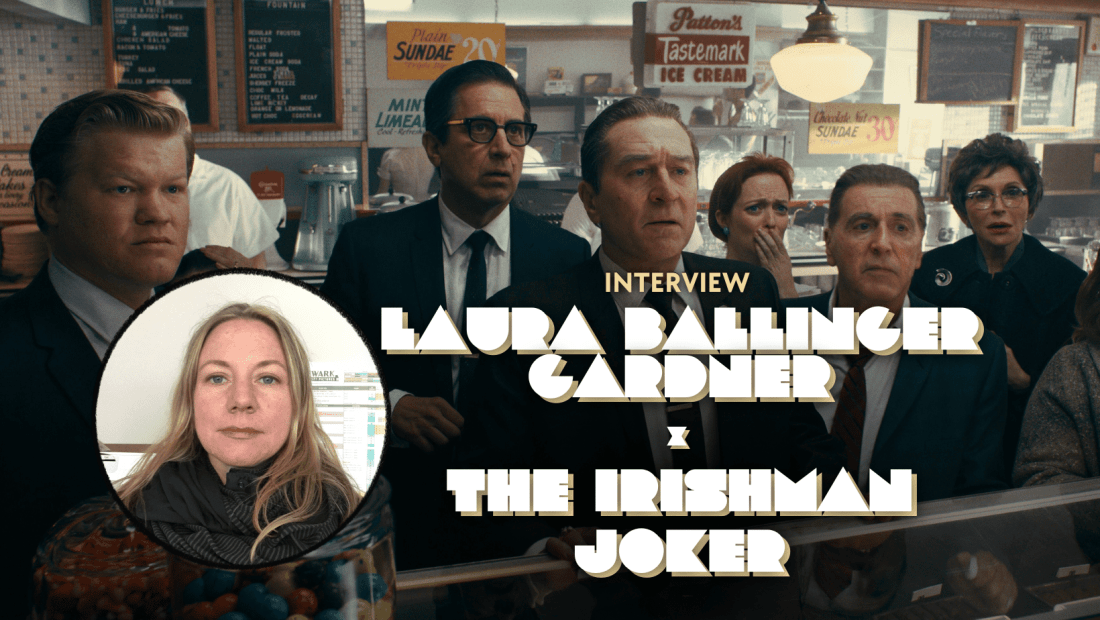
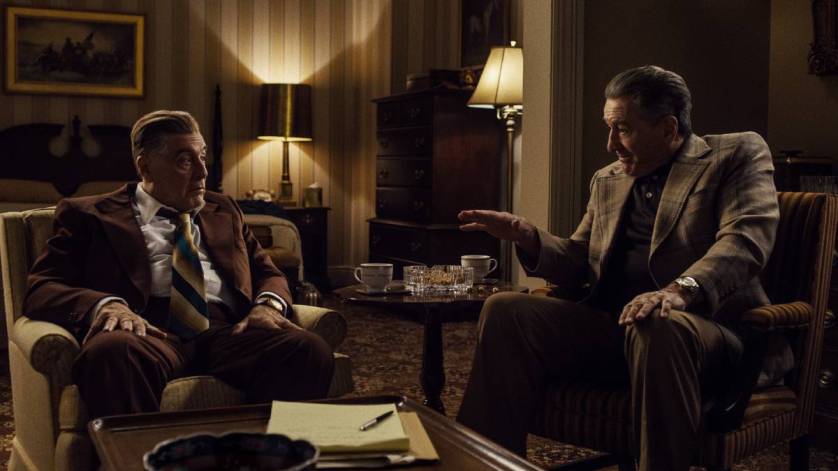
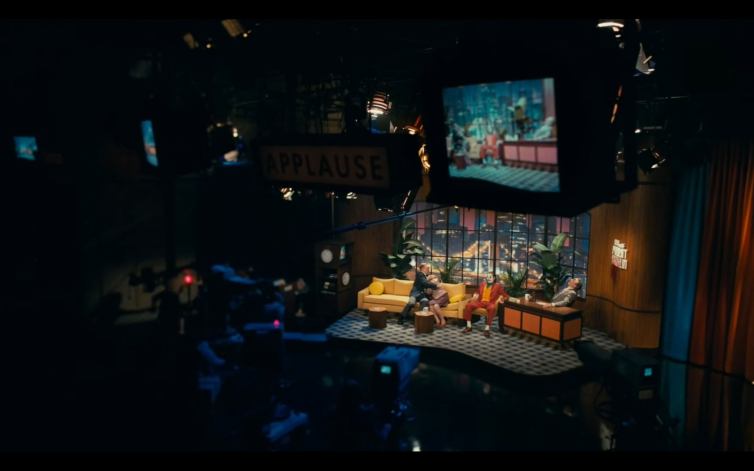
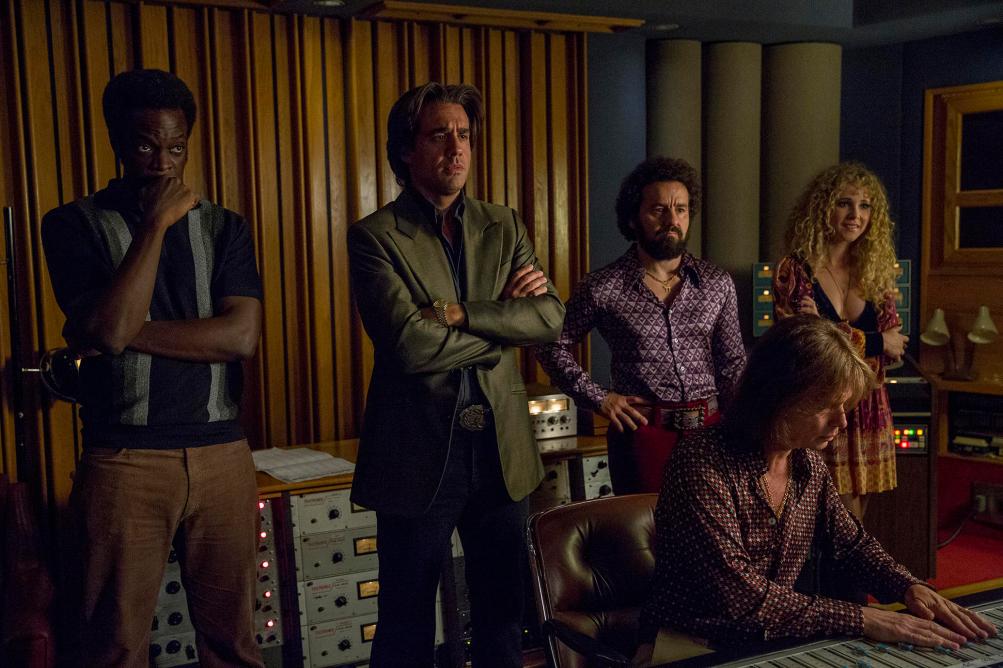
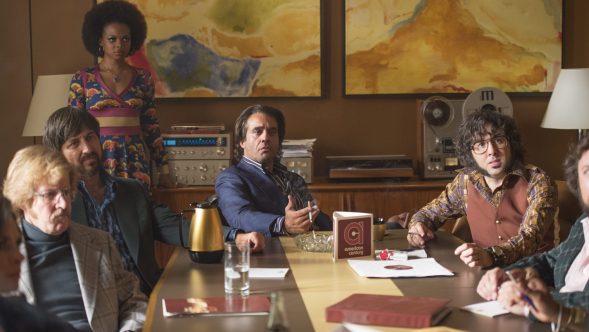
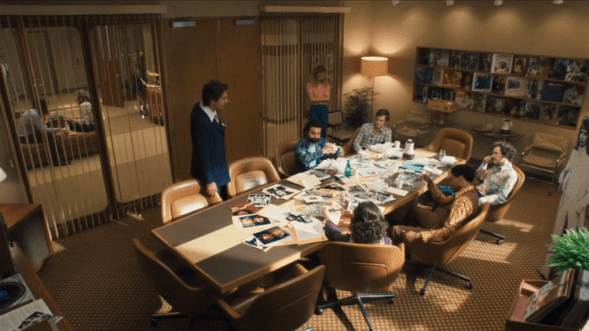
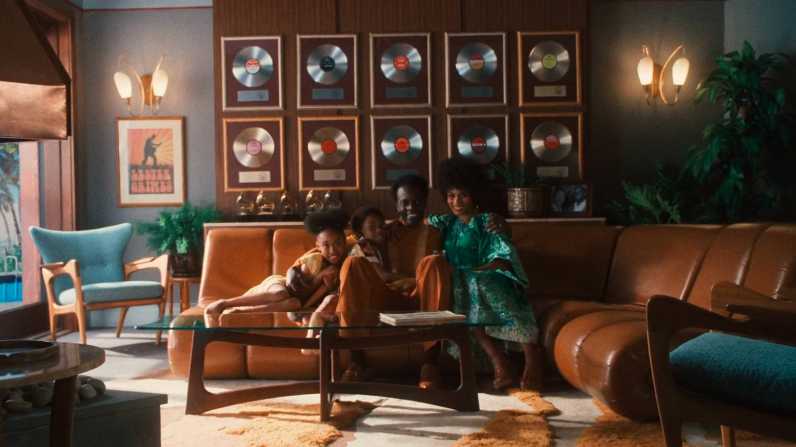
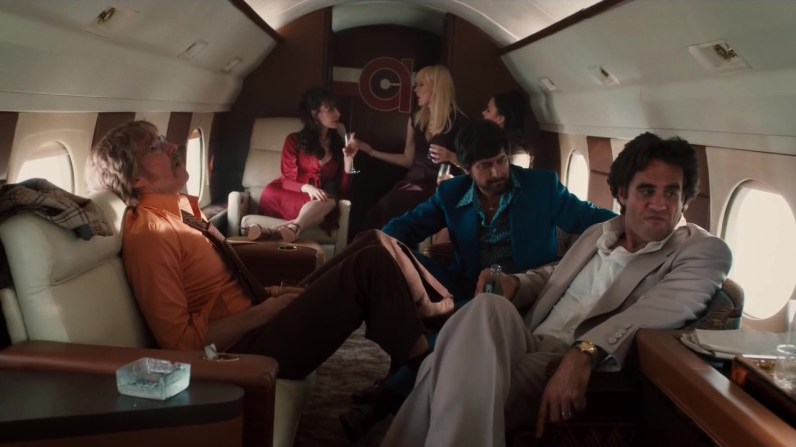
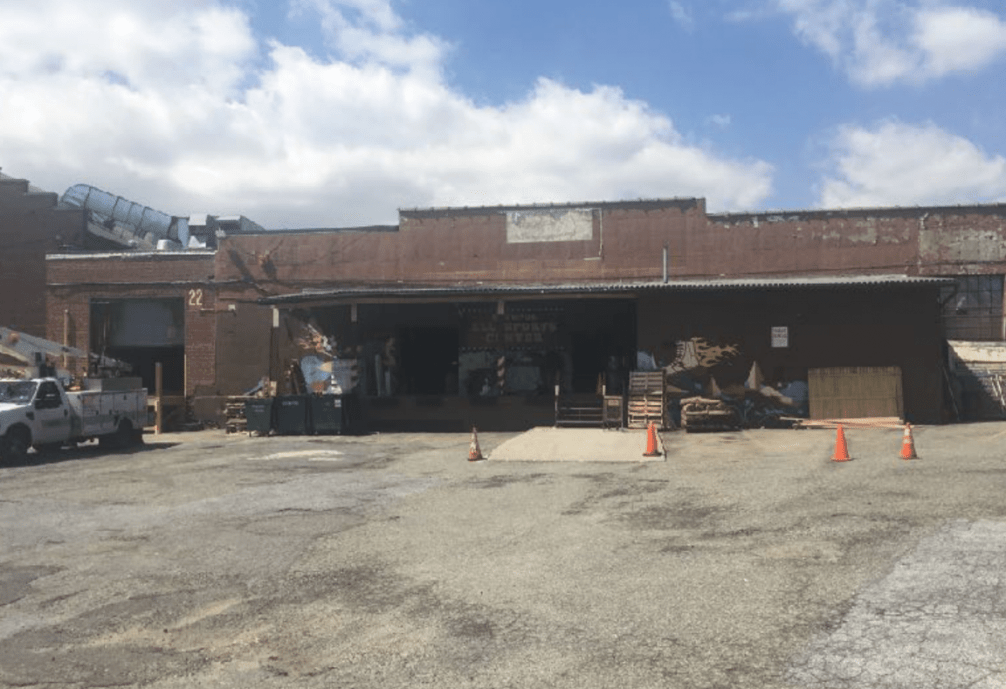
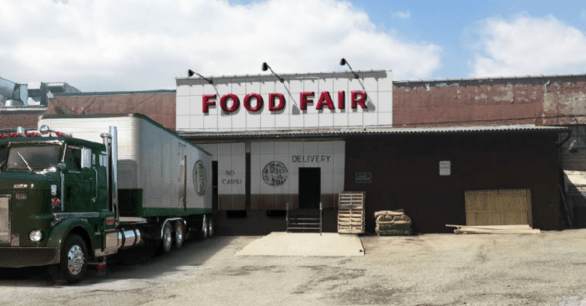
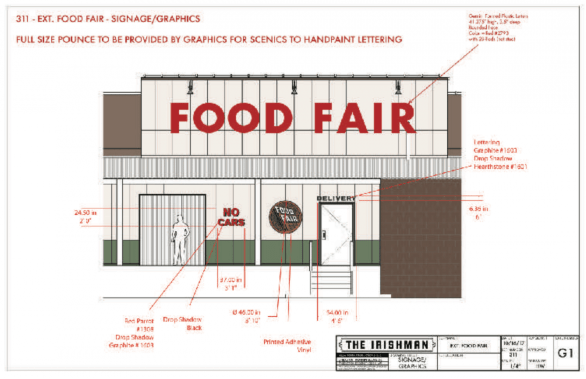
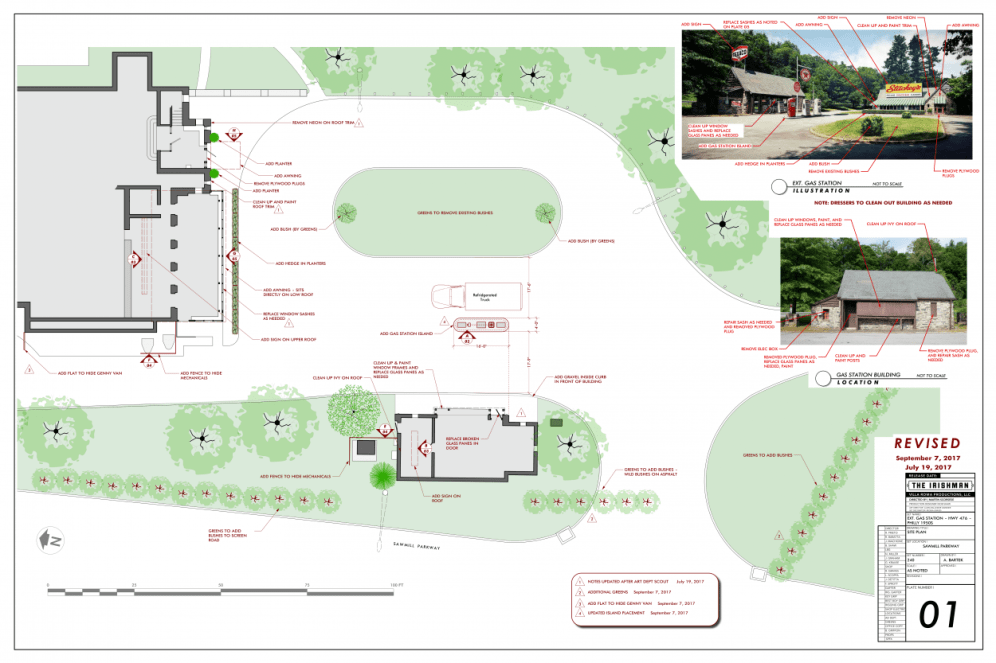
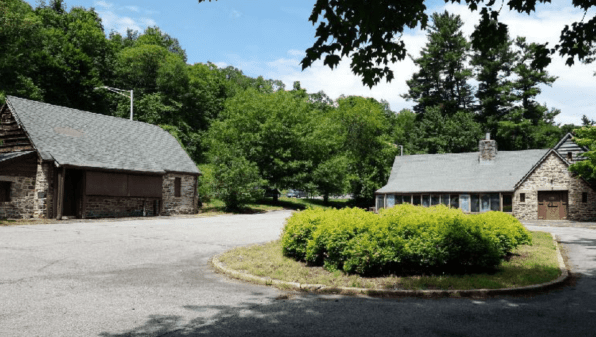
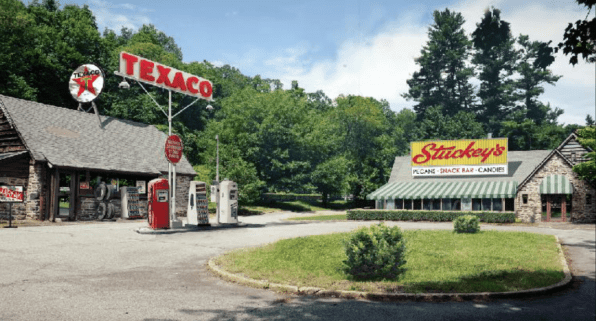
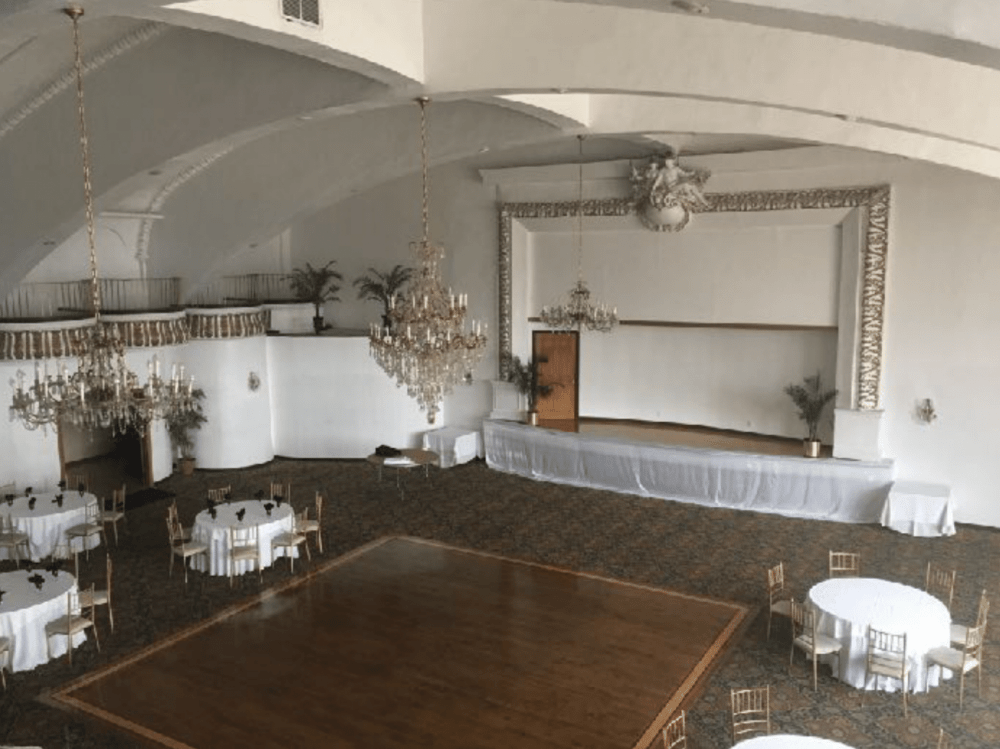
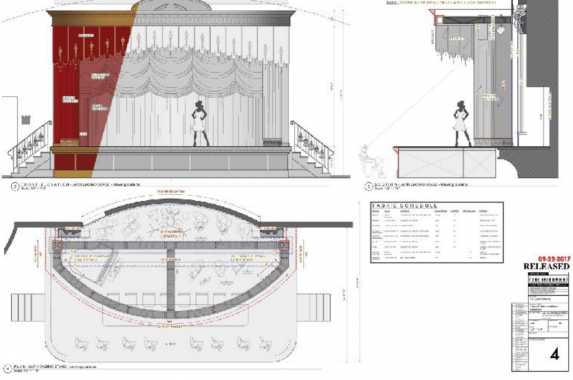
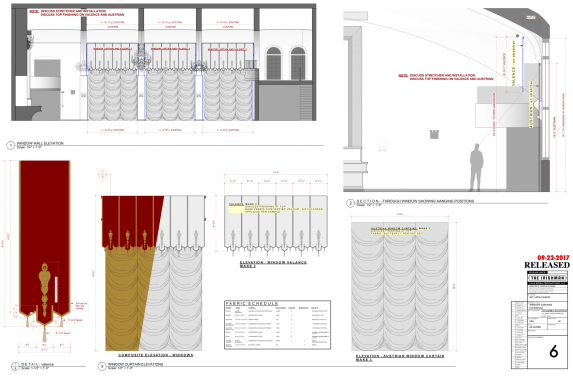
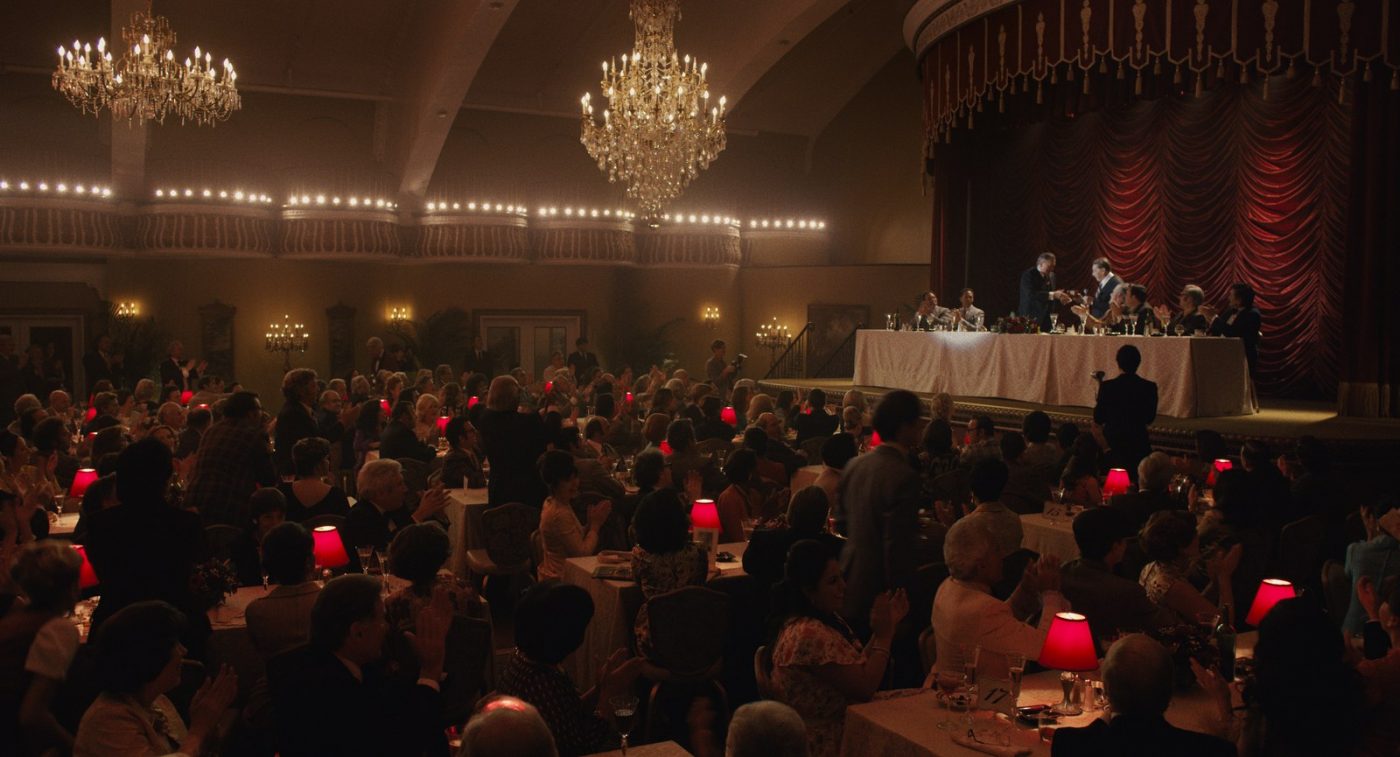
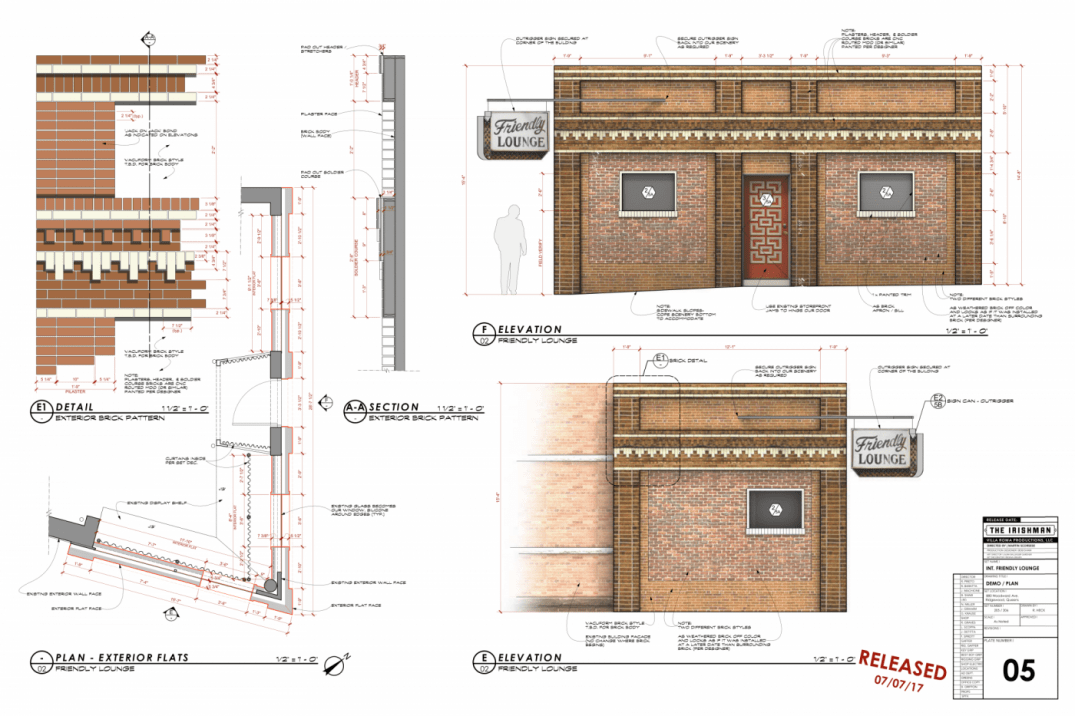
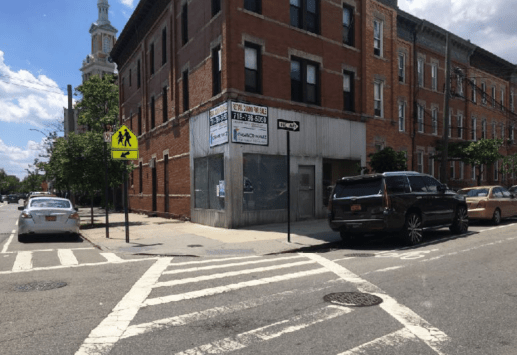
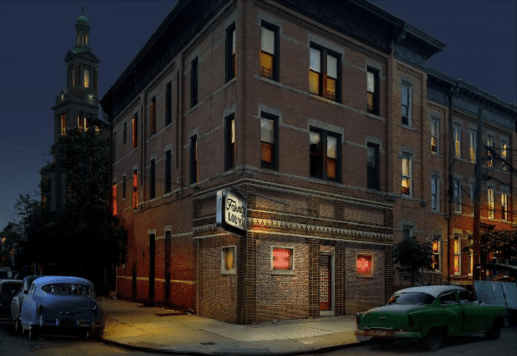
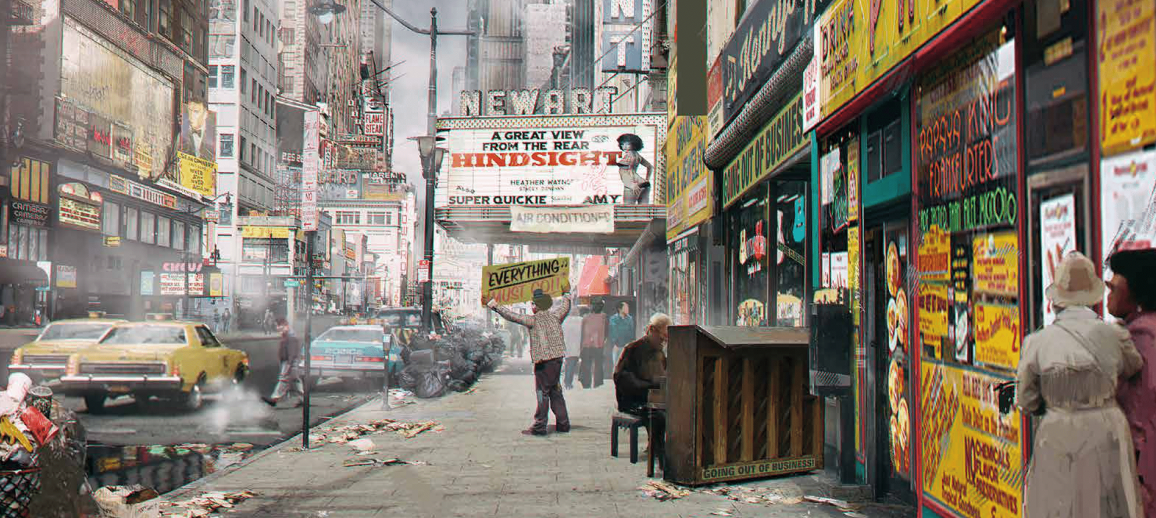
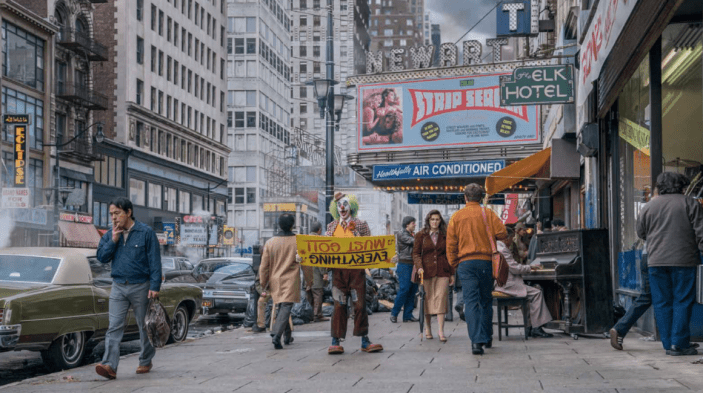
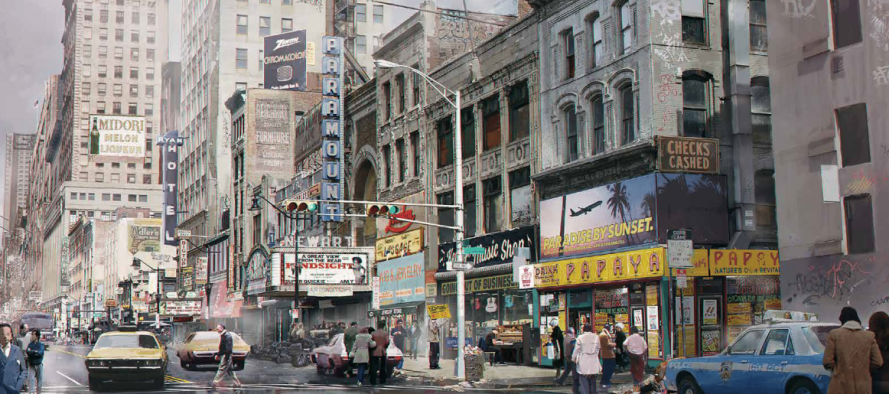
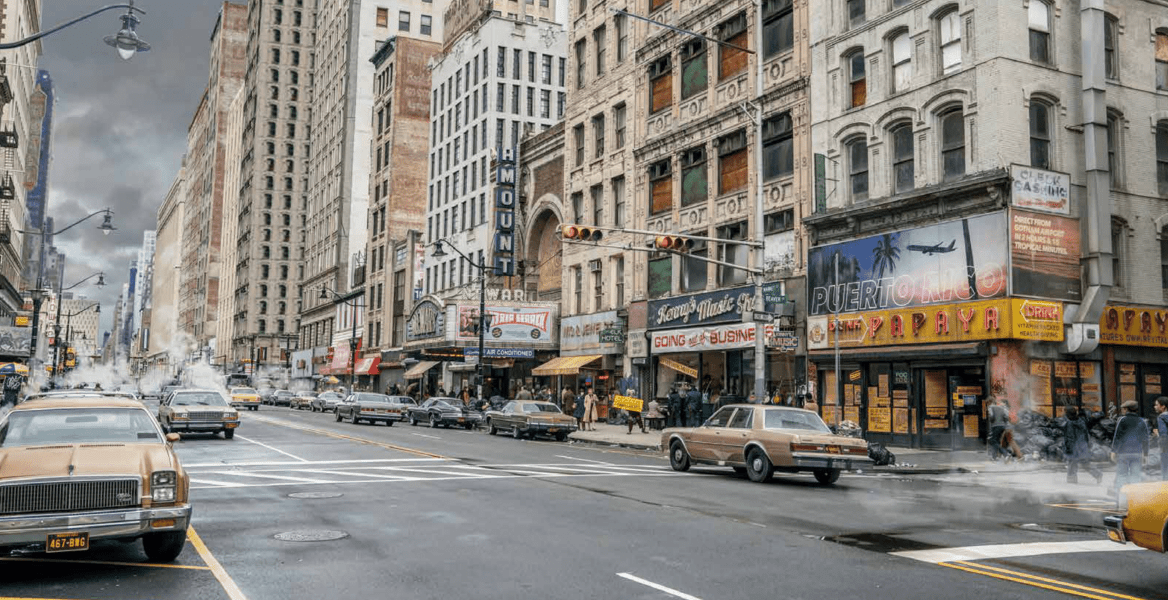
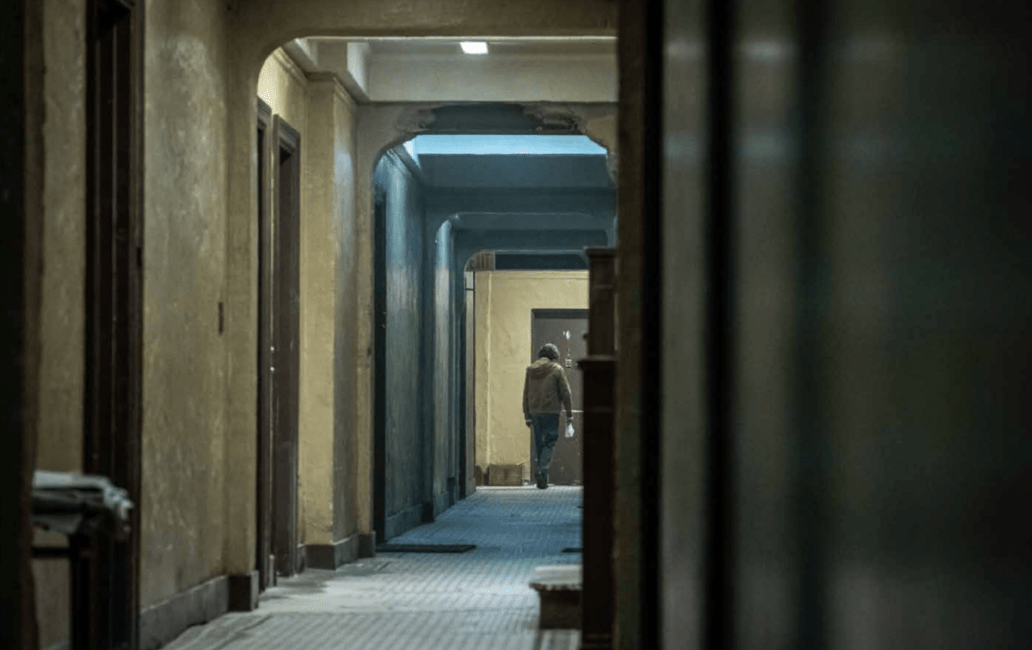
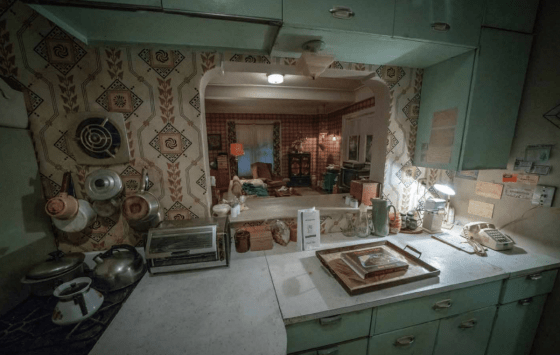
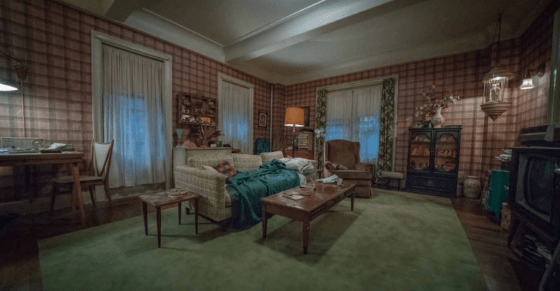
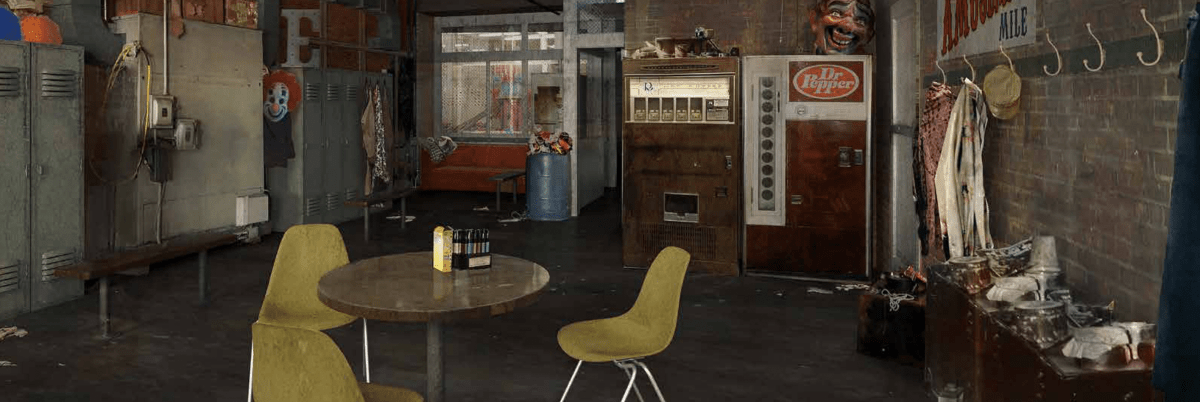

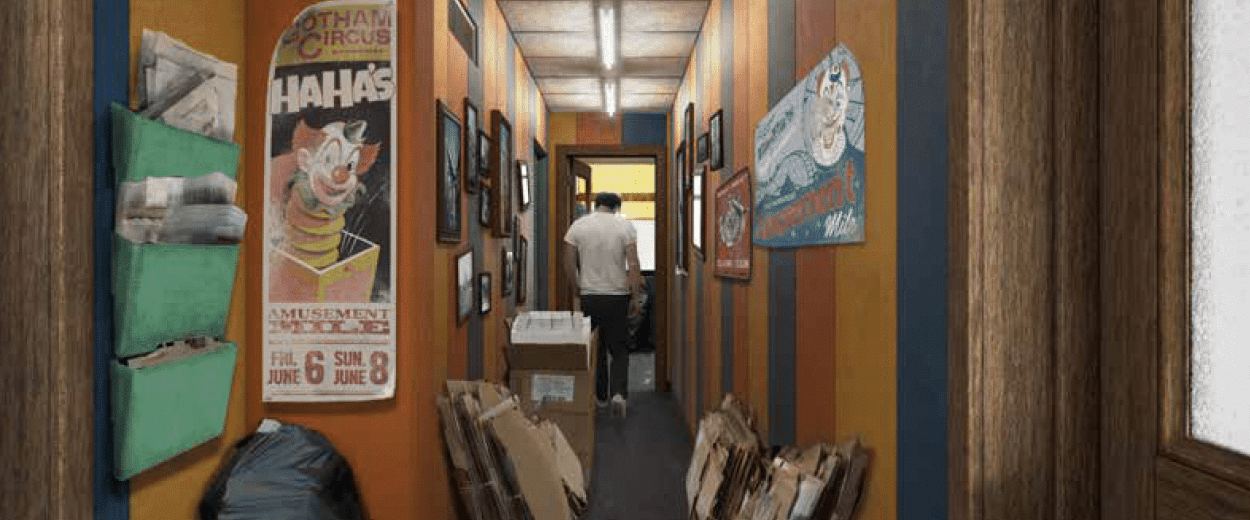
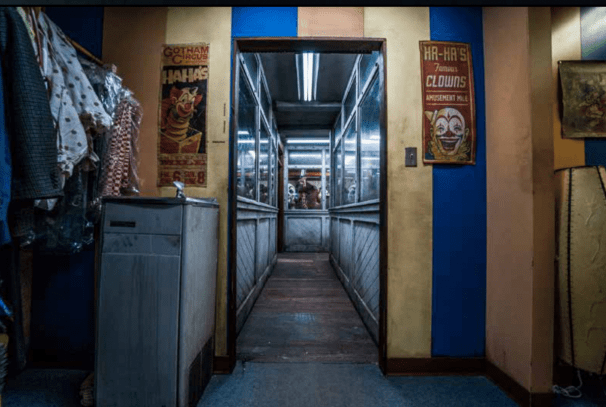

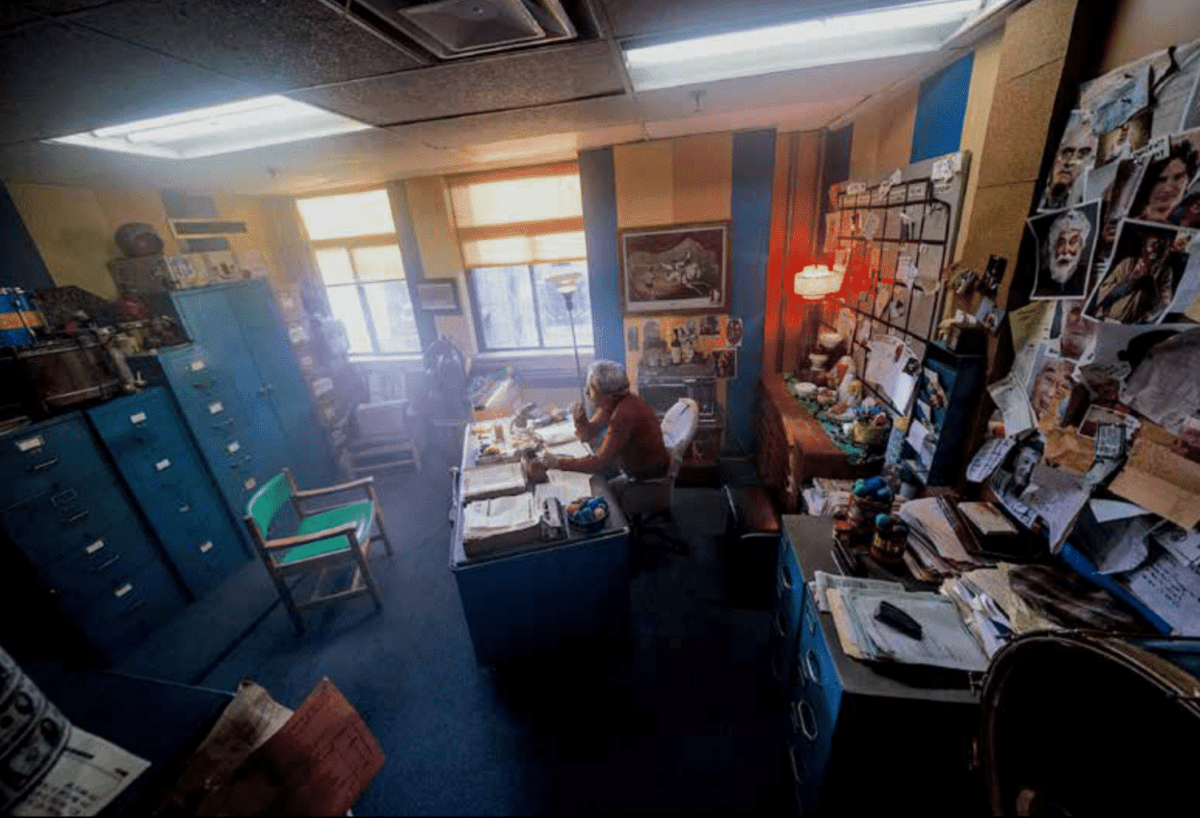
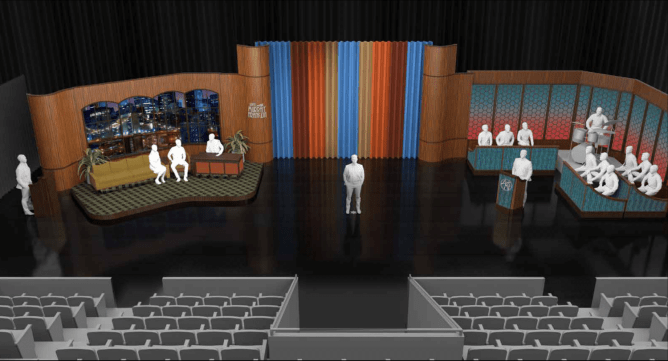
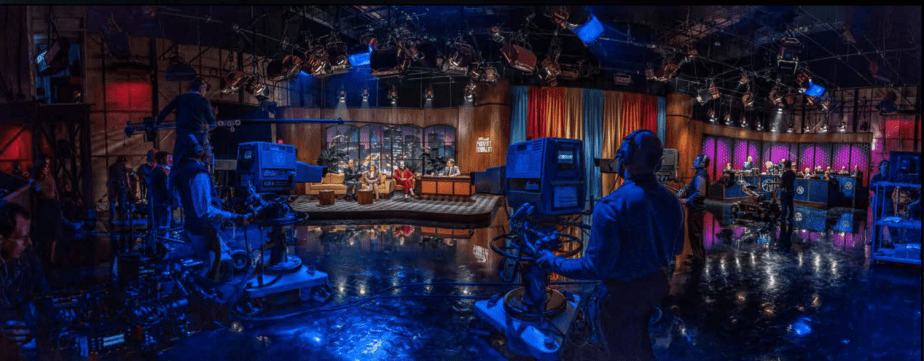
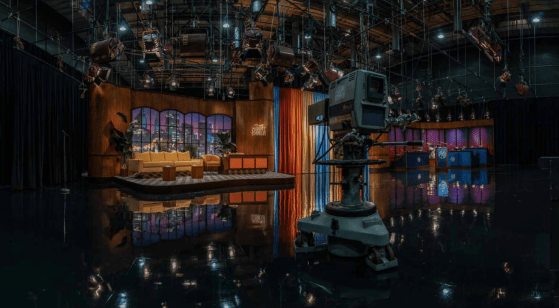
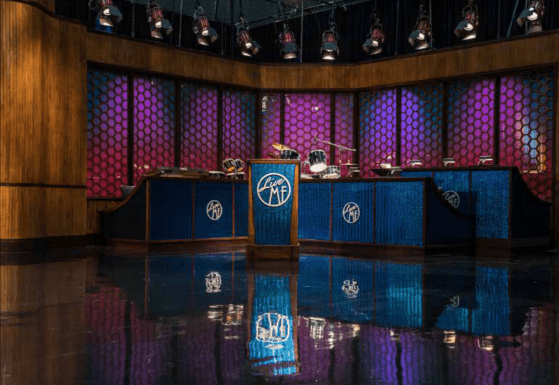


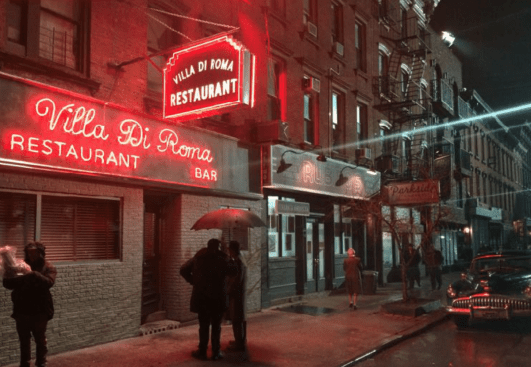
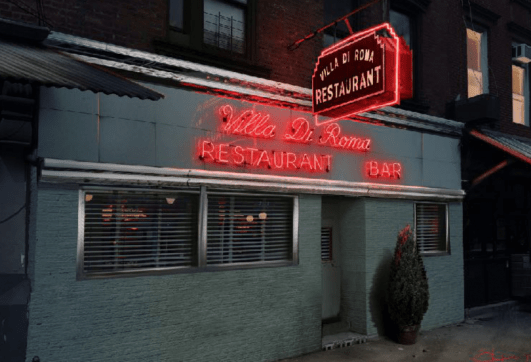
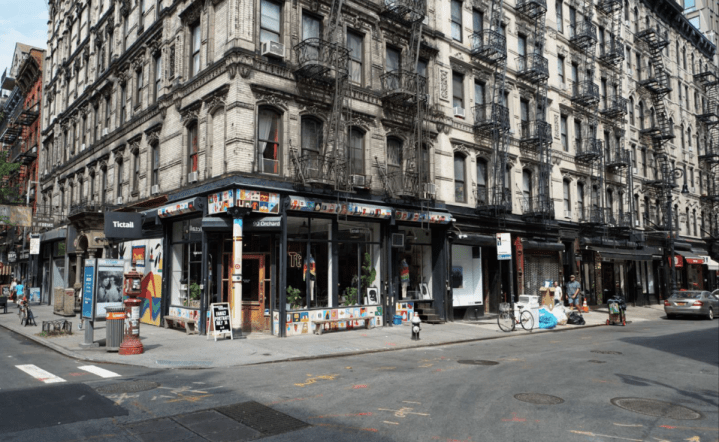
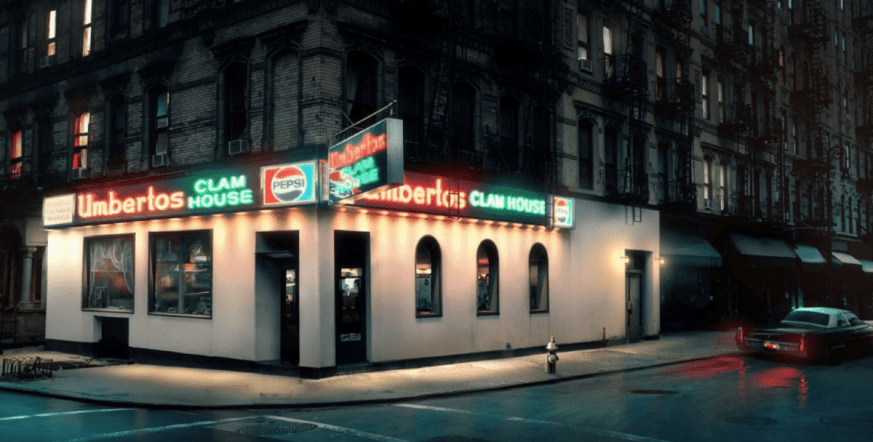
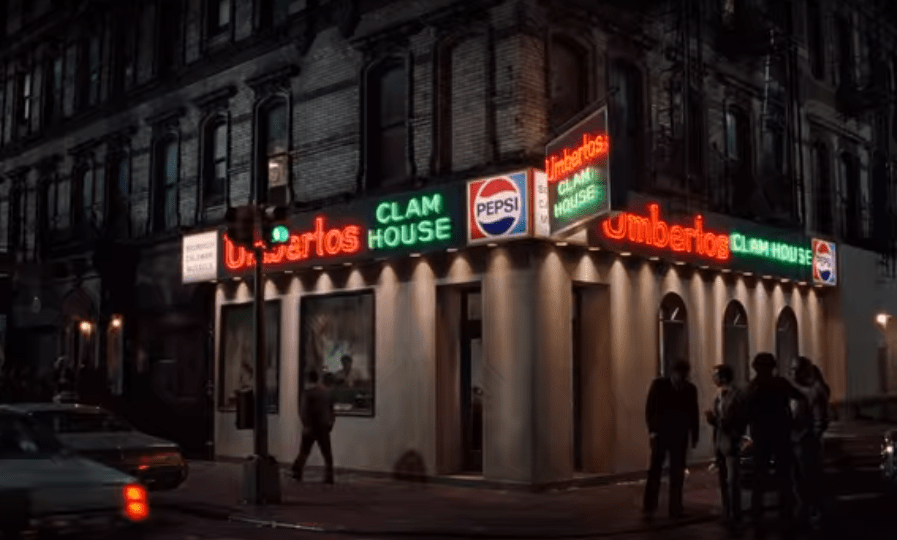
That was a really great interview. As an ADC, it was wonderful to READ our processes and the different way they work on different shows. Changing file names while shooting is crazy though.
Thanks for doing this interview and asking such relevant questions. As some one who worked years on IATSE Set Dec, and is now Art Directing small projects over seas, THIS is such an informative and inspiring piece, rare for our part of the industry. I look forward to more of your work.